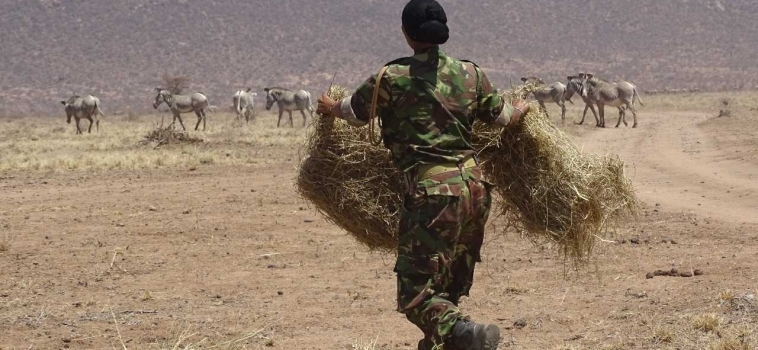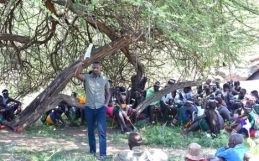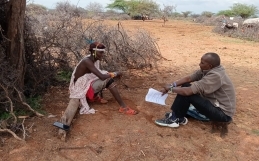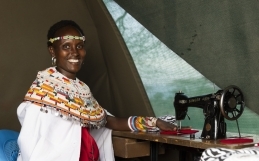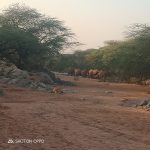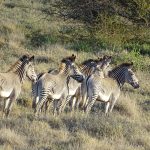In the grip of drought
Our WhatsApp groups and Slack channels are pinging all day with updates.
“I love to see the pictures of Grevy’s zebra eating hay, they really bring a refreshing feeling that our interventions are working and the massive efforts put in by the teams are being rewarded!!! Kudos team!”
Northern Kenya is currently undergoing a drought crisis. After two consecutive below-average rainy seasons, it has been over a year since adequate rain fell across this beautiful landscape. Recent climate prediction models suggest a below-average Oct-Dec 2021 rainy season, which may result in a third failed rainy season, with the effects of drought continuing on into early 2022.
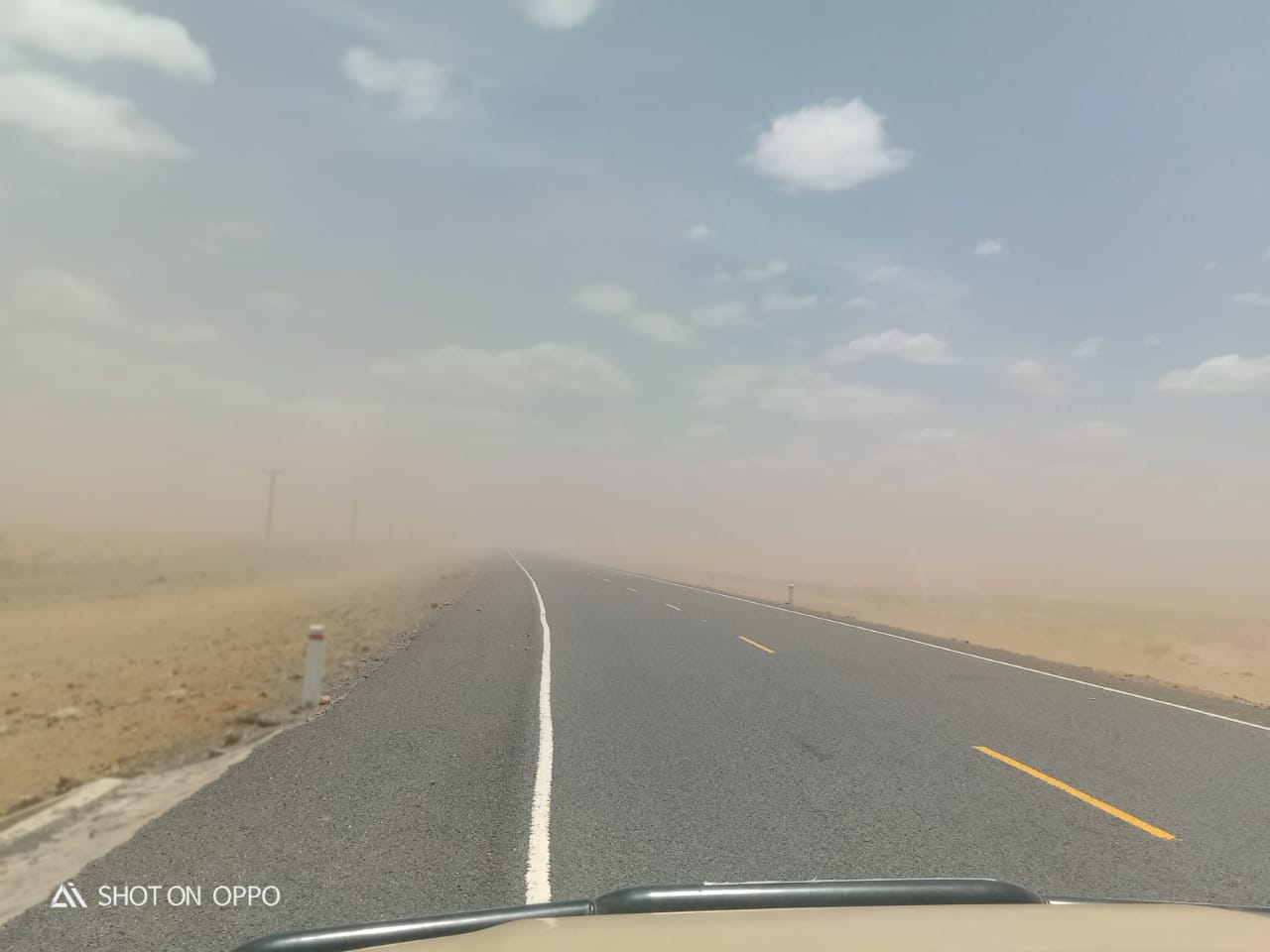
Dust blows across the Laisamis landscape
Taking action with our partners
Across GZT’s footprint, we are blessed with partners that we can trust to walk alongside us during this crisis, including the Kenya Wildlife Service (KWS), community conservancies and other conservation partners. Of special mention are our close friends, Ewaso Lions, who we are working with to respond to the drought where our respective areas of operation converge. In a time when Grevy’s zebra and other prey populations are threatened by disappearing forage, and when lion conflict is increasing as weak livestock become prime prey targets, our partnership is a critical anchor for both organisations.
The Grevy’s Zebra Trust, with authorization from KWS, started feeding Grevy’s zebra with supplementary hay in August, in Laisamis, the driest region that we work in.
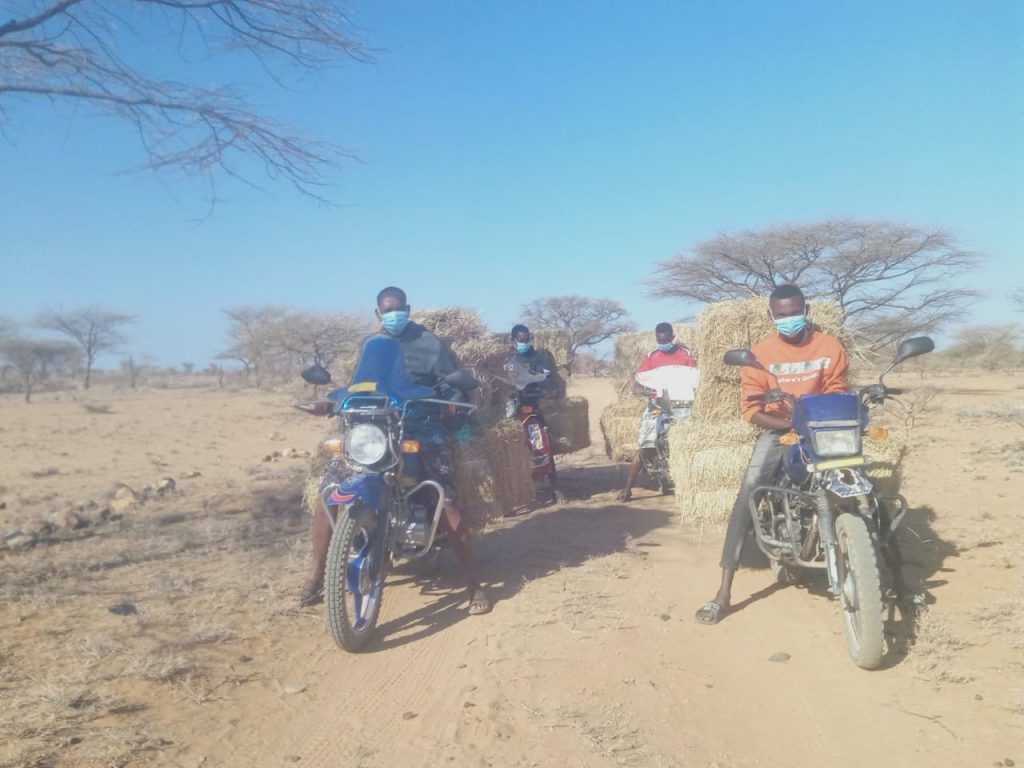
Motorbikes distribute hay to Grevy’s zebra feeding stations
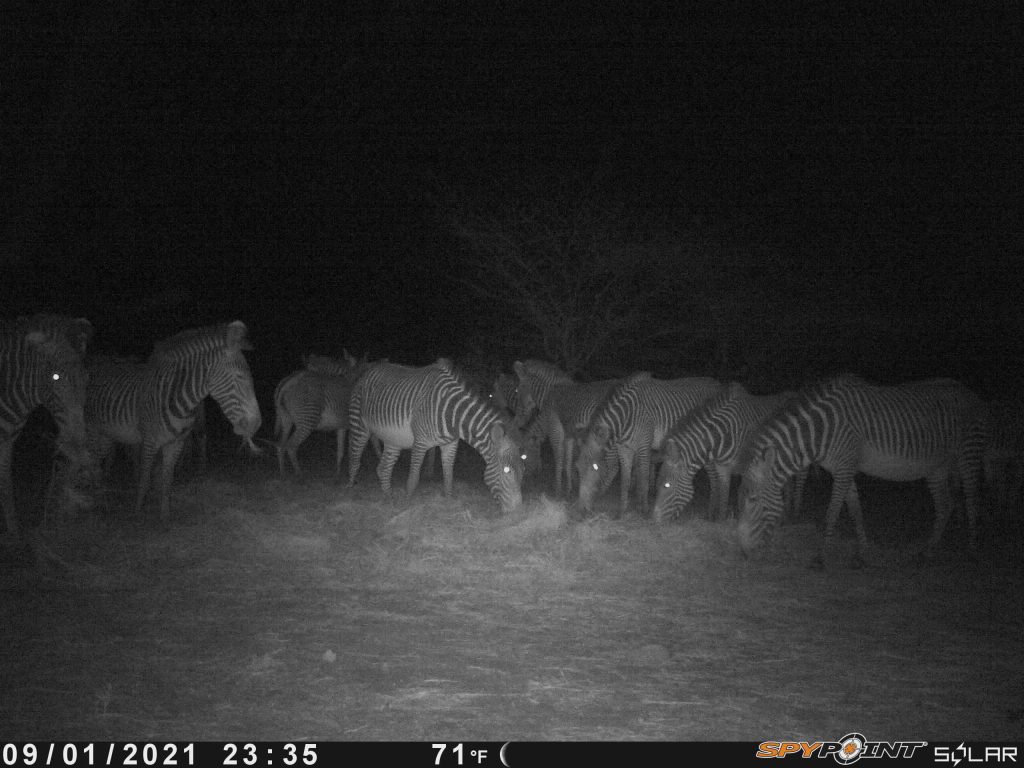
Grevy’s zebra feeding in Laisamis
This effort has now spread south to the national reserves of Samburu, Buffalo Springs and Shaba, where over 600 Grevy’s zebra have converged in the last few months, feeding on the last remaining forage. What is striking is that all the Grevy’s zebra populations we monitor currently have young foals and juveniles, a sign that the good rains from 2019 and early 2020 led to ideal breeding conditions. It is therefore critical that we are able to provide the nutrition required for Grevy’s zebra mothers and their foals to survive this crisis, which will enable the population in Kenya to grow.
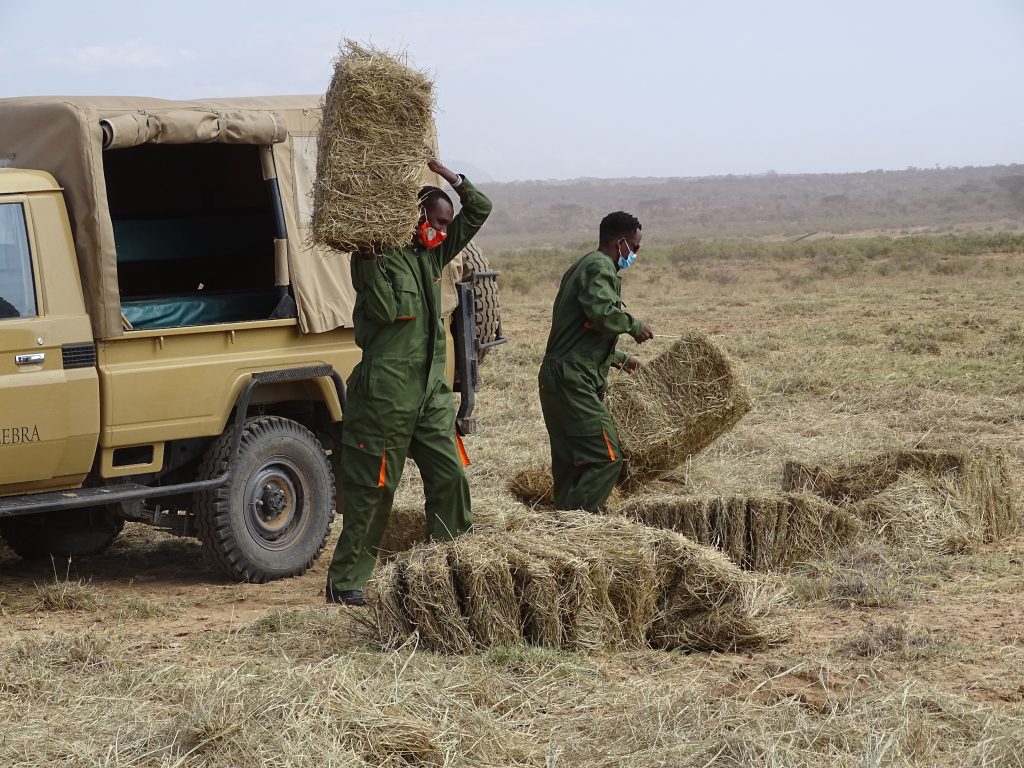
Grevy’s Zebra Trust team members setting hay at the feeding sites in Samburu National Reserve
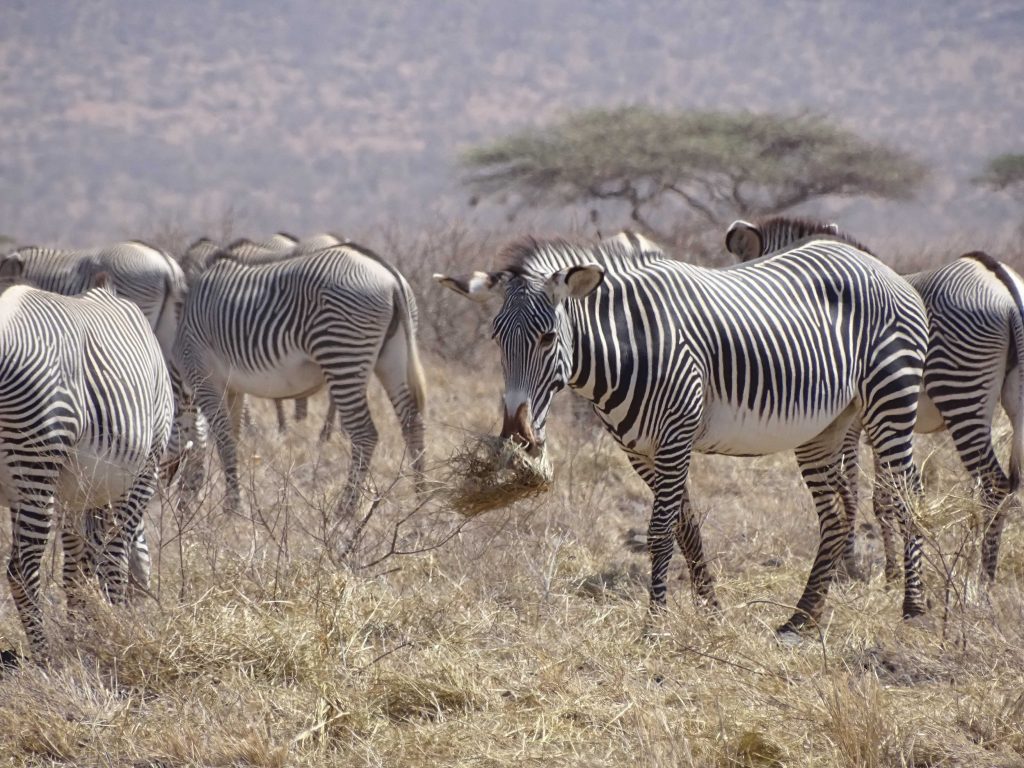
Grevy’s zebra feeding on the hay
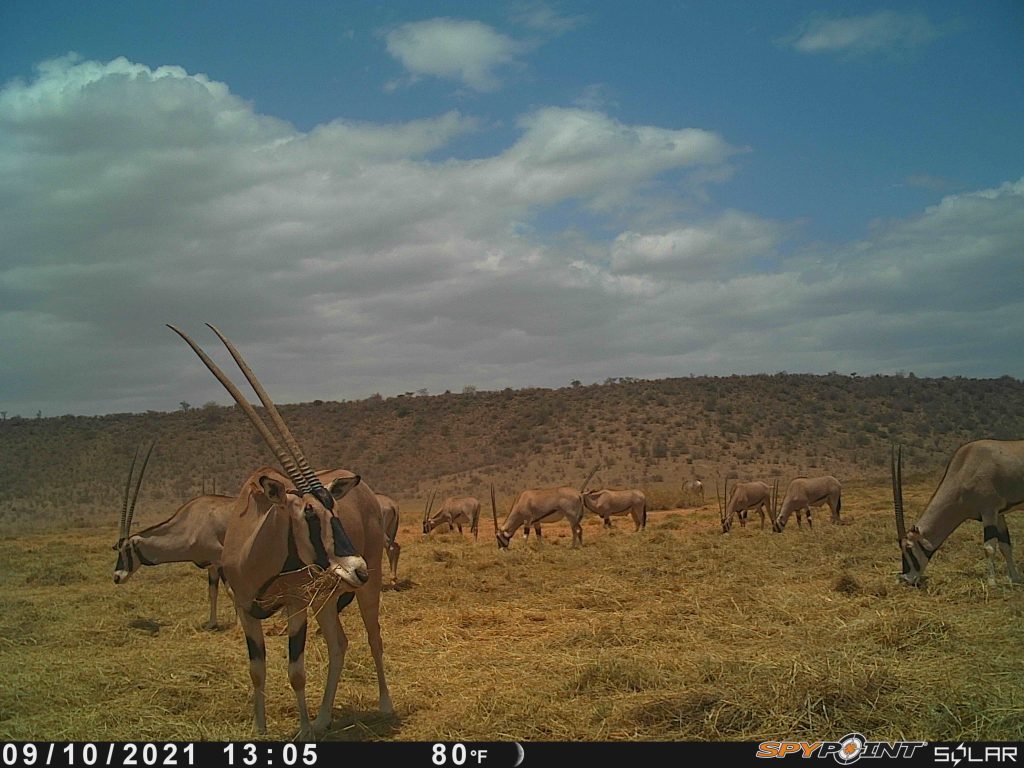
Other species like Beisa oryx also benefit from the Grevy’s zebra feeding effort
In addition to providing supplementary feed and monitoring its effectiveness, our team is also working on:
- Managing water sources to ensure that Grevy’s zebra have continued access
- Undertaking surveys every two weeks to assess the rapidly changing situation which informs our interventions
- Supporting communities with basic needs, such as access to clean water
- Working with our partners Samburu and Isiolo counties, Save the Elephants, Ewaso Lions and KWS, to ensure the Samburu, Buffalo Springs and Shaba National Reserves can continue to act as a refuge for wildlife during this critical time
Long-term solutions
This situation is devastating to the pastoralist communities that we work with, and from which more than 90% of our team is employed from. For those who are not pastoralists, it is impossible to understand how deep the roots of cultural identity go, when it comes to owning livestock. It is not simply a form of economy; it is an attachment that goes far deeper, touching the spiritual and cultural identity of individuals and whole communities.
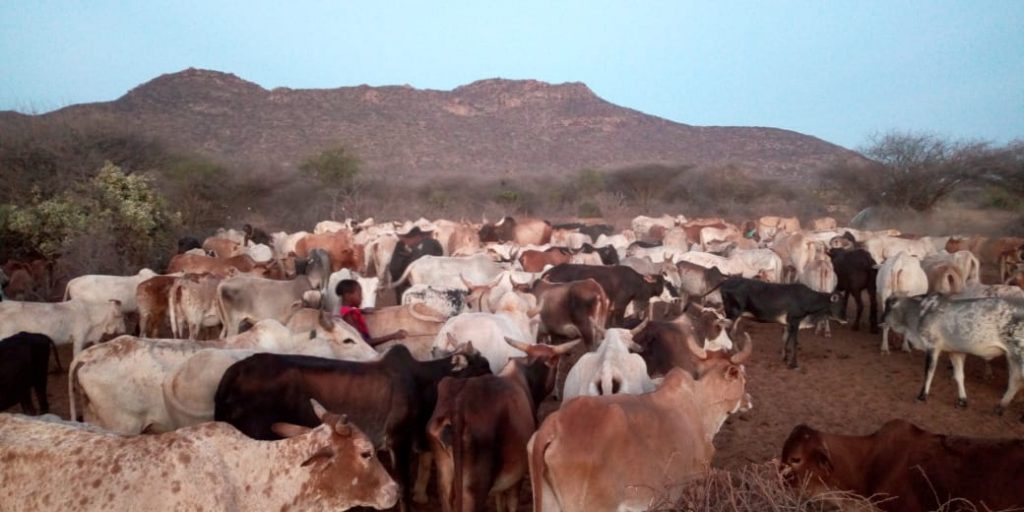
Samburu cattle herd
In northern Kenya, there have been significant social, political, economic and environmental changes over the last several decades. This compound of factors has disrupted the traditional governance structures that were historically in place for managing natural resources, and altered settlement patterns. It has changed the type of livestock, and the way that livestock move and graze in the landscape, leading to increased land degradation.
At Grevy’s Zebra Trust, we recognise the complexity of the situation and the fact that pastoralism remains the most resilient form of land use for this landscape. The threats faced by Grevy’s zebra are the same threats faced by pastoral communities, and our work seeks to better the future for both.
We are working with communities to 1) use restoration techniques to heal extremely degraded land; and 2) develop land and livestock management plans that can accommodate the new reality of permanent settlements and reduced movement. It is a blend of the new and the old ways of managing livestock in an open system.
Looking ahead
Despite the drought, we are working with our partners – Westgate Community Conservancy and Ewaso Lions – on restoration techniques to prepare the soil for when the rain arrives, so that we can catch as much rainfall as possible and regenerate the land.
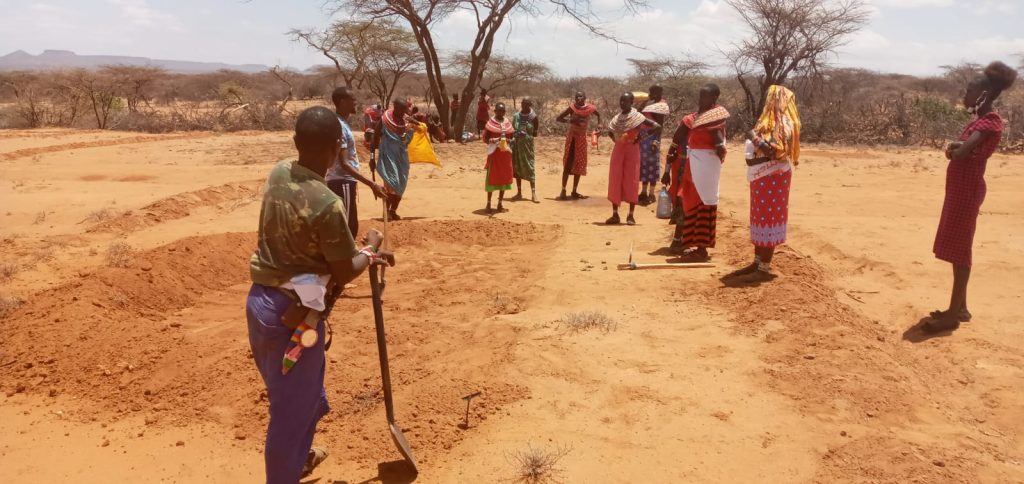
Preparing the soil for when the rains arrive
We urgently need your support. Please help us to buy 50 sacks of quality indigenous grass seeds to support Samburu women to re-seed the areas around their villages, when the rains arrive. One sack costs $75. This will help to establish grass banks in five villages. These banks can then be harvested for grass seed in the future, enabling expansion of community restoration efforts.
Thank you so much for your friendship and support!
